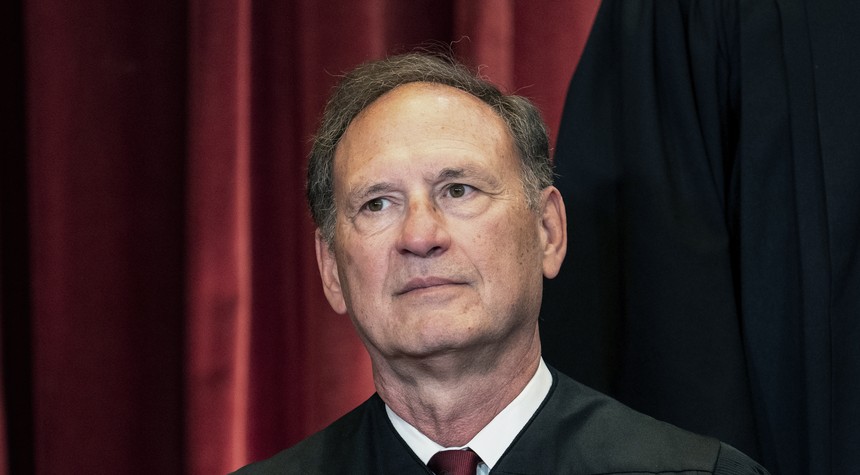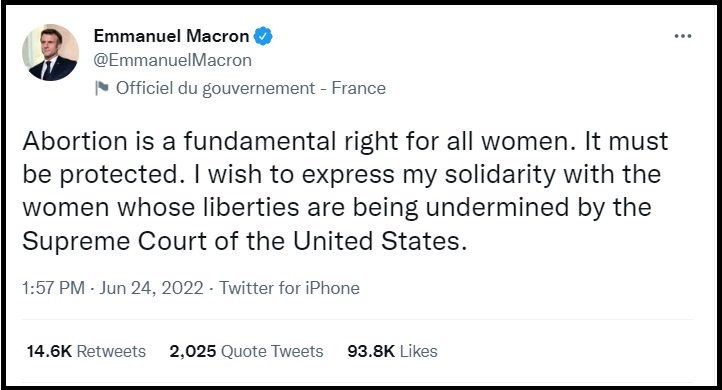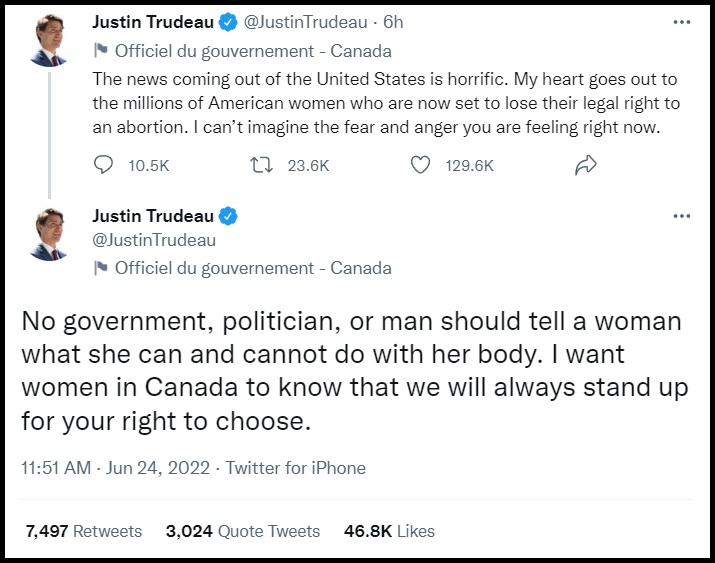Thursday, in a 6-3 decision, the U.S. Supreme Court held in New York State Rifle and Pistol Association, Inc. v. Bruen that “may issue” gun licensing that allows state officials to deny law-abiding citizens a right to possess a gun for self-defense violate the Second Amendment.
The holding came in the context of a challenge to a New York statute that prohibited individuals from carrying concealed handguns unless they “demonstrate[d] a special need for self-protection distinguishable from that of the general community.”
Beyond that holding, the Supreme Court opinion authorized by Justice Clarence Thomas proves significant for six reasons. Here are the key takeaways.
1. May-Issue Gun Licensing Regimes Violate the Second Amendment
In New York State Rifle and Pistol Association, Inc. v. Bruen, two New Yorkers, Brandon Koch and Robert Nash, along with the New York State Rifle and Pistol Association, Inc., sued the superintendent of New York State Police. They challenged the state’s statute that requires a person wishing to carry a firearm outside his home or business for self-defense to obtain a license to carry a concealed weapon. Under the statute, to obtain such a license, the applicant must prove “proper cause exists” for the government to issue the license.
As the Supreme Court summarized, New York’s statute does not define “proper cause,” but state courts have held “that an applicant shows proper cause only if he can ‘demonstrate a special need for self-protection distinguishable from that of the general community.’” Merely “living or working in an area ‘noted for criminal activity’ does not suffice.” Rather, New York courts generally require evidence “of particular threats, attacks or other extraordinary danger to personal safety.”
This licensing scheme, as the Supreme Court explained, is called a “may issue” licensing law, because it provides government officials “discretion to deny concealed-carry licenses even when the applicant satisfies the statutory criteria, usually because the applicant has not demonstrated cause or suitability for the relevant license.”
Six jurisdictions have adopted “may issue” schemes in addition to New York: California, the District of Columbia, Hawaii, Maryland, Massachusetts, and New Jersey. In contrast, as the Supreme Court explained, “the vast majority of States—43 by our count—are ‘shall issue’ jurisdictions, where authorities must issue concealed-carry licenses whenever applicants satisfy certain threshold requirements, without granting licensing officials discretion to deny licenses based on a perceived lack of need or suitability.”
In yesterday’s decision, the Supreme Court held that New York’s proper-cause requirement violates the Second Amendment, applicable to the state by virtue of the Fourteenth Amendment and the incorporation doctrine. (For more on the incorporation doctrine, read here.)
That law, the Supreme Court reasoned, unconstitutionally “prevents law-abiding citizens with ordinary self-defense needs from exercising their right to keep and bear arms because New York failed to prove that the Second Amendment’s text, as informed by history,” demonstrates the government may limit the right to carry arms in public to individuals who have “a special need for self-protection distinguishable from that of the general community.”
While the court’s Thursday decision technically concerned only the New York statute challenged in the lawsuit, the opinion’s analysis applies equally to the “may issue” licensing schemes in force in five other jurisdictions, meaning those will soon fall too.
2. The Court Is Done Punting on the 2nd Amendment
Thursday’s decision in Bruen proves significant beyond the bottom line, however, first because the Supreme Court has finally ended its two-decades-long punt on Second Amendment jurisprudence.
In 2008, the Supreme Court held in District of Columbia v. Heller that the Second Amendment, which provides, “a well regulated Militia, being necessary to the security of a free State, the right of the people to keep and bear Arms, shall not be infringed,” protects “the individual right to possess and carry weapons in case of confrontation.” The Heller court further held that an individual’s right exists irrespective of service in a militia, reasoning that the “militia” clause, while explaining a purpose of the protection, did not limit the individual right.
Two years later, the high court in McDonald v. City of Chicago held the Second Amendment “is fully applicable to the States” and state subdivisions such as counties and cities. Accordingly, state and state subdivisions, like the federal government, remain constrained by the national Constitution from infringing on an individual’s right to keep and bear arms.
While Heller and McDonald were landmark Supreme Court decisions and the first Second Amendment cases decided by the high court since 1939, both cases addressed issues that were narrow and limited to whether laws banning or regulating firearms in a person’s home violated the Second Amendment. In both cases, the Supreme Court declared the laws unconstitutional.
But since then, “the Supreme Court has rejected numerous challenges to other laws affecting the right to bear keep and bear arms, taking a nearly universal hands-off approach on the Second Amendment. The rare exception came in 2016, when the court, without a hearing and in an unsigned two-page order, held in Caetano v. Massachusetts that stun guns were protected under the Second Amendment. Unsurprisingly, that decision added little clarity to Second Amendment jurisprudence.”
That hands-off approach continued even while lower federal courts ignored the Supreme Court’s analysis in Heller, which made clear that the Second Amendment protects “firearms commonly used for a lawful purpose.” Thus, for instance, the Supreme Court in 2017 let stand the Fourth Circuit’s holding in Kolbe v. Hogan that semi-automatic rifles are not constitutionally protected “arms,” even though “the prevalence of lawfully used AR-15s and semiautomatic AK-47s clearly meets the Heller standard for garnering Second Amendment protection.”
With the Supreme Court’s silence in the Second Amendment arena came the creation of conflicting standards by the various circuit courts and many unanswered questions. On Thursday, however, the high court spoke, and in a majority opinion joined in full by six justices. That opinion clarified several significant aspects of the scope and protections guaranteed by the Second Amendment.
3. Right to Bear Arms Is Not a Second-Class Right
Justice Thomas, writing for the majority, began the court’s opinion by noting that since Heller and McDonald, the lower courts have “coalesced around a ‘two-step’ framework for analyzing Second Amendment challenges that combines history with means-end scrutiny.” That framework, in general, began by asking whether the challenged law regulates activity falling outside the scope of the Second Amendment, as originally understood. If outside the scope of the Second Amendment, the regulation passes constitutional muster, and no further analysis is required.
If, however, the regulated activity falls within the general parameters of Second Amendment protection, courts applying the two-step analysis ask “how close the law comes to the core of the Second Amendment right and the severity of the law’s burden on that right.” Here, Justice Thomas noted that “Courts of Appeals generally maintain ‘that the core Second Amendment right is limited to self-defense in the home.’” Other laws affecting the right to bear arms—because they were not considered “core”—received less protection, with lower courts applying “intermediate scrutiny” and considering “whether the Government can show that the regulation is “substantially related to the achievement of an important governmental interest.”
Thursday’s opinion expressly rejected that two-part approach, stating that “despite the popularity of this two-step approach, it is one step too many.” Instead, the Supreme Court held “that when the Second Amendment’s plain text covers an individual’s conduct, the Constitution presumptively protects that conduct.” Thus, under Bruen, to survive a Second Amendment challenge, the government must do more than “simply posit that the regulation promotes an important interest.” Rather, the government must affirmatively prove “that the regulation is consistent with this Nation’s historical tradition of firearm regulation.”
In reaching this conclusion, the Supreme Court stressed that “the constitutional right to bear arms in public for self-defense is not “a second-class right,” subject to an entirely different body of rules than the other Bill of Rights guarantees.” “We know of no other constitutional right that an individual may exercise only after demonstrating to government officers some special need,” the court noted.
“That is not how the First Amendment works when it comes to unpopular speech or the free exercise of religion. It is not how the Sixth Amendment works when it comes to a defendant’s right to confront the witnesses against him. And it is not how the Second Amendment works when it comes to public carry for self-defense,” the high court stressed.
4. Right to Self-Defense Is Not Limited to the Home
After rejecting the two-step approach to the Second Amendment, the court considered whether New York’s “may issue” permitting regime “was consistent with this Nation’s historical tradition of firearm regulation.” That detailed analysis marched the reader through centuries of history, from medieval England through the early 20th century.
While Justice Thomas’s opinion hit several high points, the “short prologue” he provided to his analysis of the Civil War and antebellum time periods proved most powerful:
Even before the Civil War commenced in 1861, this Court indirectly affirmed the importance of the right to keep and bear arms in public. Writing for the Court in Dred Scott v. Sandford, 19 How. 393 (1857), Chief Justice Taney offered what he thought was a parade of horribles that would result from recognizing that free blacks were citizens of the United States. If blacks were citizens, Taney fretted, they would be entitled to the privileges and immunities of citizens, including the right ‘to keep and carry arms wherever they went.’ Thus, even Chief Justice Taney recognized (albeit unenthusiastically in the case of blacks) that public carry was a component of the right to keep and bear arms—a right free blacks were often denied in antebellum America.
From there, the majority opinion in Bruen thoroughly analyzed the “historical tradition of firearm regulation” before holding “the Second Amendment guaranteed to ‘all Americans’ the right to bear commonly used arms in public subject to certain reasonable, well-defined restrictions.” “To confine the right to ‘bear’ arms to the home would nullify half of the Second Amendment’s operative protections,” the court stressed, adding that “confining the right to ‘bear’ arms to the home would make little sense given that self-defense is ‘the central component of the [Second Amendment] right itself,’ and “confrontation can surely take place outside the home.”
In sum, then, the Bruen decision did three important things: First, it expressly rejected the two-part test invented by the lower courts over the 30-some years since Heller and McDonald. Second, the Supreme Court made clear the controlling question is whether the regulation at issue “is consistent with this Nation’s historical tradition of firearm regulation.” Third, the Bruen court made clear that the Second Amendment’s guarantee of the right to bear arms exists outside the home.
5. The Supreme Court Provides Great Guidance
Beyond these three significant holdings, the Supreme Court’s opinion in Bruen represents a substantial advancement of Second Amendment jurisprudence because the high court’s analysis provides extensive direction and guidance relevant to future cases.
For instance, in holding that there is a constitutional right to keep and bear arms in the public, the court delineated three limited parameters for regulations on that right, namely “well-defined restrictions governing the intent for which one could carry arms, the manner of carry, or the exceptional circumstances under which one could not carry arms.” On the third point, the court made clear that while regulations of weapons in “sensitive places” was constitutionally permissible, “sensitive places” cannot be defined so broadly that it includes all places where people congregate.
A second point made by the majority in Bruen concerned the constitutionality of “shall issue” laws. The court made clear that such licensing schemes that contained “narrow, objective, and definite standards” remained constitutional under Bruen’s analysis.
However, the court added that “because any permitting scheme can be put toward abusive ends, we do not rule out constitutional challenges to shall-issue regimes where, for example, lengthy wait times in processing license applications or exorbitant fees deny ordinary citizens their right to public carry.” This dicta provides a strong basis for challenges to abusive licensing systems.
The Supreme Court provided further guidance for courts by explaining how they should determine whether a challenged regulation “is consistent with this Nation’s historical tradition of firearm regulation.” That historical inquiry “will often involve reasoning by analogy,” the Bruen court explained. Thus, such analogical reasoning will require a court to first determine “whether a historical regulation is a proper analogue for a distinctly modern firearm regulation,” and that requires the court to determine “whether the two regulations are ‘relevantly similar.’”
Two metrics that guide this analysis, the Supreme Court explained, are the “how and the why the regulations burden a law-abiding citizen’s right to armed self-defense.” Thus, in determining whether the modern regulation is analogous to an historical law, court should consider if they impose a “comparable burden on the right of armed self-defense” and whether the “burden is comparably justified.”
Another point clarified by the Supreme Court in Thursday’s opinion concerns the importance of historical sources. “When it comes to interpreting the Constitution, not all history is created equal,” the court stressed, noting that “constitutional rights are enshrined with the scope they were understood to have when the people adopted them.”
Relatedly, the Bruen analysis also made clear that the existence of some historical “outliers,” meaning a few statutes or court decisions that supported the gun-control measure, could not overcome “the overwhelming weight of other evidence regarding the right to keep and bear arms.” That point will prove important in the future to prevent the government from citing some random statute found buried in the archives to thwart the Second Amendment.
The Supreme Court’s rejection of any “judge-empowering ‘interest-balancing inquiry’” that considers “whether the statute burdens a protected interest in a way or to an extent that is out of proportion to the statute’s salutary effects upon other important governmental interests,” is also key to the future of Second Amendment jurisprudence because it makes clear that a court cannot trump the individual’s right to keep and bear arms out of a desire to protect the public.
Here, the court made two salient points—ones often overlooked by those seeking to sacrifice the Second Amendment for the illusion of public safety. First, “[t]he right to keep and bear arms . . . is not the only constitutional right that has controversial public safety implications.” Consider, for instance, the right to be free from unreasonable searches and seizures, protected by the Fourth Amendment, and the number of lives that could be saved if police arrested, without cause, gang members and searched their property.
Second, the balance sought between gun rights and public safety has already been struck, the court stressed, writing: “The Second Amendment ‘is the very product of an interest balancing by the people’ and it ‘surely elevates above all other interests the right of law-abiding, responsible citizens to use arms’ for self-defense.” Or more bluntly put: If Americans desire to limit the right of law-abiding citizens to keep and bear arms, they must first amend the Constitution.
6. Six Solidly Originalist Judges
The sixth key conclusion flowing from the Supreme Court’s 6-3 decision in Bruen reaches far beyond the Second Amendment: The Supreme Court now has a solid originalist majority.
Following decades of fractured Supreme Court decisions, with no one opinion garnering a majority of votes, yesterday six justices signed on, in total, to the majority opinion in Bruen. Throughout, the opinion represented an ode to originalism, beginning, as noted above, with the court’s pronouncement “Constitutional rights are enshrined with the scope they were understood to have when the people adopted them.”
Further, while acknowledging that “applying constitutional principles to novel modern conditions can be difficult and leave close questions at the margins,” the six-justice majority provided a strong defense of originalism as the most feasible interpretative methodology. “Reliance on history to inform the meaning of constitutional text—especially text meant to codify a pre-existing right—is, in our view, more legitimate, and more administrable, than asking judges to ‘make difficult empirical judgments’ about ‘the costs and benefits of firearms restrictions,’ especially given their ‘lack [of] expertise’ in the field,” the court stressed.
While future constitutional cases, including Second Amendment ones, will surely see a splintering of the six justices, that all six justices agreed, in principle, with the fundamentals of originalism set forth by Justice Thomas speaks volumes to the promise of a high court focused on applying the Constitution, not rewriting it.











